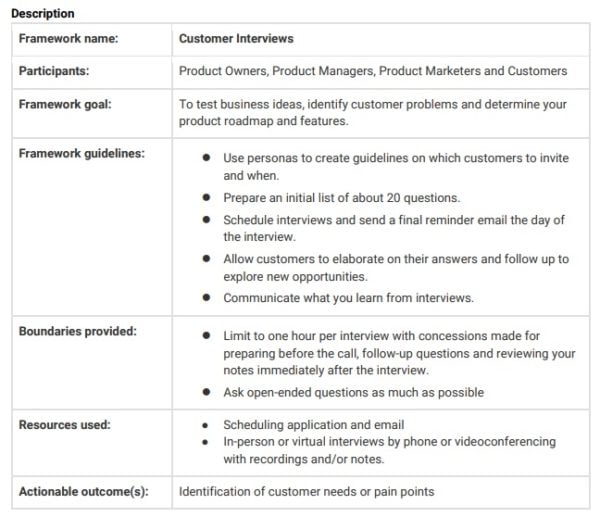The Old Way of Doing Things
I was recently engaged by a midwestern client who was trying to solve a customer retention problem in their software business. The vast majority of their subscribers didn’t actually use the training that was offered when they signed on. They believed this led to lower utilization and a lower probability of renewal.
My client’s team had previously tried to solve this problem using what I call the “Old Way of Doing Things.” That would include:
- Get a project together to “increase customer retention”
- Brainstorm ideas on how to increase retention
- Implement ideas
- Disband team
- Wait a year to see if it worked
In the meantime, retention would still be a problem as the company waited for results.
First, You Have to Listen
The central mistake made in the example above is that my client assumed their employees knew what the customer wanted. Actual customers were rarely contacted for direct input to identify the cause of issues and pain points.
However, there was an answer right in front of them — A New Way of Working.
One of the team members worked in a role as a client representative, and as a result had close relationships with external customers. Instead of assuming she knew what customers wanted, she made it her job to get customer feedback on a regular basis.
She asked questions such as:
- Did you avail yourself of the opportunity for training?
- If so, did you use our online training or the one-on-one training?
- Was it easy to access the training?
- What could we do to make the training more accessible and relevant to you?
These questions opened the door to what actual customers were thinking, and led to insights that would never have been possible in the Old Way.
Guidelines for Effective Customer Interviews
The customer interview methodology we most often recommend draws from the Lean Startup world where the emphasis is on the solving the right problem in order to avoid launching a product or service that no one wants.
1. Define Your Personas
To avoid solving the wrong problem, we start by taking a page from design thinking: Define Your Personas. You will not be able to interview every customer, so define your target audience with personas and find customers who represent the personas you create. Interview those customers.
2. Define The Problem
Are you solving a customer problem, or fixing a problem with your own software that has been identified by your customer? If you don’t know what problem you are trying to solve, you will waste your time conducting the interviews.
As you are preparing for the interviews, you should follow some guidelines to ensure that you are properly prepared and focused on the problem to investigate.
When conducting the interviews, consider asking open ended questions such as:
- Can you elaborate?
- Could you give me an example?
- Can you explain that again differently?
- Of all the things that went on, why did that stick out in your mind?
Allow the customer to speak freely rather than answer yes or no questions, which will give more opportunities to learn how and what they are thinking rather than narrowing the conversation to the perspective of the interviewer.
3. Be Agile
Adapt to the flow of the interview to respond to answers from the customer. Be open to new information that might challenge your existing paradigm. This will allow you to refine your solutions in a way you might not have envisioned. As you wrap up the session, consider asking one of the following:
- What else do you want to share?
- What should I have asked that I didn’t?
- If you were sitting down with my CEO, what would you want to say?
Once you get your answers, have a consistent approach to reviewing those answers. Invariably, some customer feedback might conflict. Have an approach for how to resolve any conflicts. Was the problem that the questions being asked were ambiguous, or is it possible you might have to come up with more than one solution to meet your customer’s needs?
4. Analyze and Iterate
After you have gathered customer feedback, analyze the results and consider taking the feedback summary back to the customer for review to ensure you have understood their needs.
Review your interview notes and look for patterns in the responses you recorded. Hearing something only once might be interesting, but when you start to see a pattern in the results it’s time to take action.
Download our Customer Interview Framework
The Customer’s Opinions Are More Important Than Yours
Remember that you are not the customer, so while your opinions are interesting, be sure to validate them with the people who are actually paying money for your product. In the example above, the problem to be solved was customer retention. We had to keep this in the front of our minds when developing multiple solutions.
Business Agility is about sensing changes in the business environment and responding quickly. Doing that requires a deep understanding of the needs and desires of your customers.
If you would like more assistance in making your business more Agile, contact us today, we can help! Also, be sure to follow us on Linkedin, Twitter and/or Facebook to hear about our new blogs and upcoming webinars.
References:
Business Agility – Scaled Agile Framework
Business Agility – Agile Alliance
Customer interviews; tips, do’s, and don’ts
Response Ability: The Language, Structure and Culture of the Agile Enterprise






